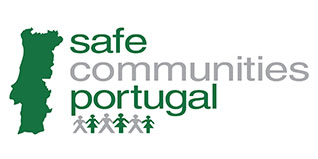 The 1755 Lisbon earthquake impacted Portugal, the Iberian Peninsula, and Northwest Africa on the morning 1 November, Feast of All Saints, at around 09:40 local time.
The 1755 Lisbon earthquake impacted Portugal, the Iberian Peninsula, and Northwest Africa on the morning 1 November, Feast of All Saints, at around 09:40 local time.
Till this day the location of the epicentre is still in a scientific debate with several theories around. The historical is in the Atlantic Ocean about 200 km (120 mi) west-southwest of Cape St. Vincent and about 290 km (180 mi) southwest of Lisbon. The same applies to the magnitude, being also the historical magnitude estimated at 8.5 to 9 Richter scale.
Several buildings that had suffered little earthquake damage were destroyed by the subsequent fire and/or tsunami. The new Lisbon opera house (the “Ópera do Tejo”), opened just six months before, and was burned to the ground.
The Royal Ribeira Palace, which stood just beside the Tagus River in the modern square of Terreiro do Paço, was destroyed by the earthquake and tsunami. Inside, the 70,000-volume royal library as well as hundreds of works of art, including paintings by Titian, Rubens, and Correggio, were lost.
The royal archives disappeared together with detailed historical records of explorations by Vasco da Gama and other early navigators.
The royal family escaped unharmed from the catastrophe: King Jose I and the court had left the city, after attending mass at sunrise, fulfilling the wish of one of the king’s daughters to spend the holiday away from Lisbon, they were in Belem area.
Many survivors rushed to the open space of the docks for safety and watched as the sea receded, approximately 40 minutes after the earthquake, a tsunami engulfed the harbour and downtown area.
Lisbon was not the only Portuguese city affected by the catastrophe.
Throughout the south of the country, in particular the Algarve, destruction was rampant. The tsunami destroyed some coastal fortresses in the Algarve and, at lower levels, it razed several houses. Almost all the coastal towns and villages of the Algarve were heavily damaged.
THE LETTER

Letter reveals that “it hit whilst she was doing the washing up”!
A rare letter has been found, written by a British nun Sister Witham, dated 27 January 1756, describing how she was present in Lisbon on 1st November 1755.
She described – “I looked about me and saw the walls a-shaking, and a-falling down then I got up and took to my heels, with Jesus in my mouth, and to the quire I run, thinking to be safe there, but there was no entrance but all falling round us, and the lime and dust so thick there was no seeing…. We spent the day in prayers but with a great deal of fear and apprehension as we had shakings and trembles all that day and night”.
Here is more about the parchment (with copies of it), found by a researcher from the University of Exeter during cataloguing of the records of Syon Abbey. Writing to her aunt, Sister Witham told of how she survived the ordeal which killed around 60,000 people, starting with how she was washing dishes when the tremors began.
